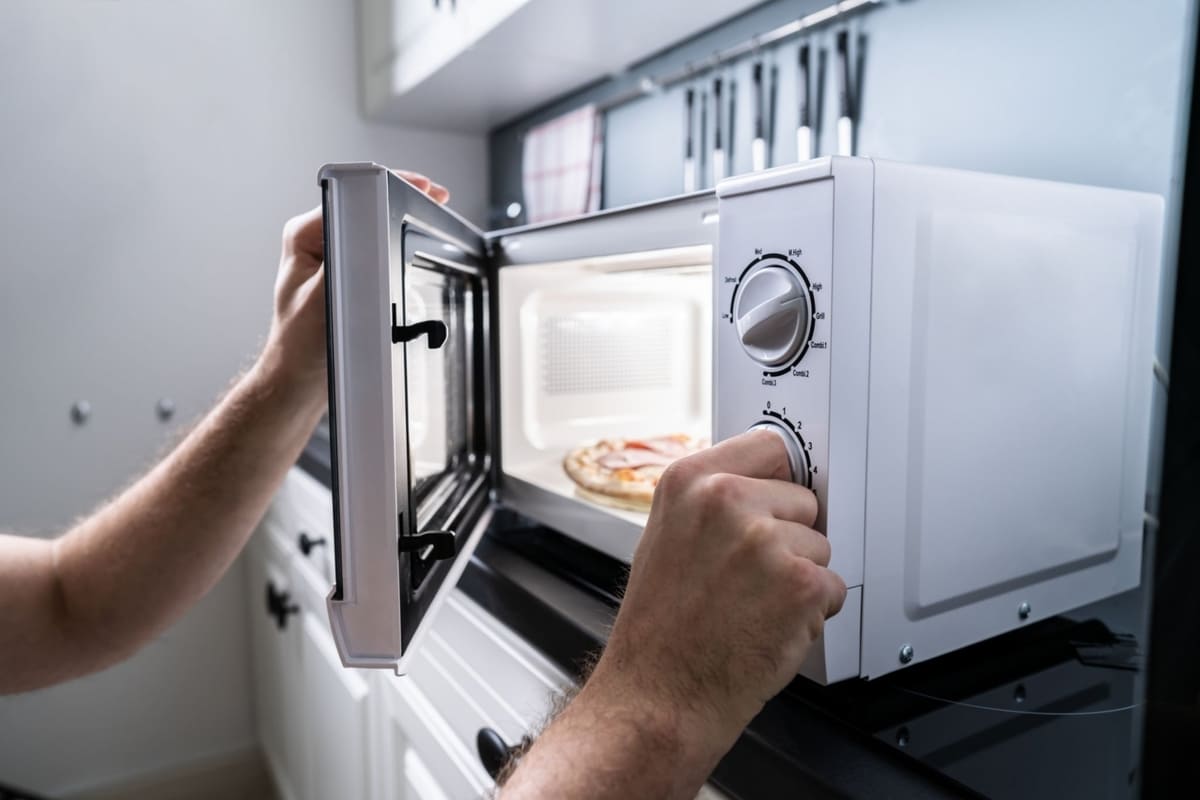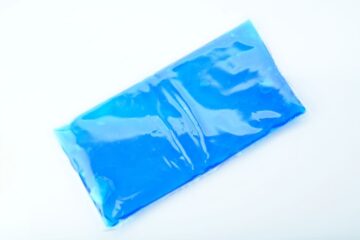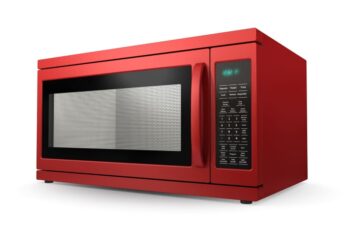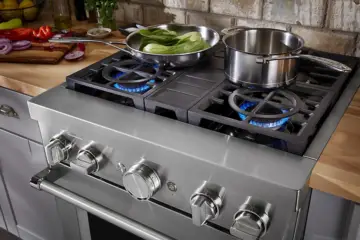Microwaves have revolutionized the way we cook and reheat food. They are fast, convenient, and efficient, but have you ever wondered how hot a microwave can get in just one minute? In this article, we will explore how hot does a microwave get in 1 minute, the factors that affect the temperature of a microwave, and how to measure the temperature accurately. We will also discuss the risks of overheating a microwave, how to clean and maintain your microwave, and compare it with other heating methods.
How Microwaves Generate Heat?
Microwaves use electromagnetic waves to generate heat. When microwaves enter the food, they are absorbed by the water molecules, fat, and sugars present in the food. As these molecules vibrate, they produce heat, which cooks the food.
How Electromagnetic Waves Generate Heat?
Microwaves are a type of electromagnetic radiation that has a shorter wavelength than radio waves. When these waves come in contact with the food, they are absorbed by the water molecules present in the food. This absorption causes the water molecules to vibrate, which in turn produces heat.
Interaction of Microwaves with Food
Microwaves are designed to interact with water molecules in food. This is why foods with higher water content, like vegetables and fruits, heat up more quickly than foods with lower water content, like bread or pizza.
Why Some Materials Heat Up More than Others?
Materials that are good conductors of electricity, like metals, can cause sparks and even start fires when placed in a microwave. This is because the microwaves can create an electric current in the metal, which produces heat. On the other hand, materials like plastic, paper, and glass do not absorb microwaves and therefore do not heat up as quickly.
Factors that Affect the Temperature of a Microwave
Several factors can affect the temperature of a microwave, including wattage, size and shape of the microwave, and the type of food being heated.
Wattage
The wattage of a microwave determines how much power it can produce. The higher the wattage, the faster the food will cook. A microwave with a higher wattage will also get hotter than a microwave with a lower wattage.
Size and Shape of the Microwave
The size and shape of the microwave can affect the temperature distribution. Microwaves with a larger interior can accommodate larger plates and dishes, but may not heat food as evenly as a smaller microwave. Microwaves with a rectangular shape may also have hot and cold spots in the corners.
Type of Food
The type of food being heated can also affect the temperature of the microwave. Foods with high water content, like vegetables and soups, heat up faster and can cause the microwave to get hotter than foods with lower water content, like baked goods or meat.
Measuring the Temperature of a Microwave
Measuring the temperature of a microwave is important to ensure that your food is cooked thoroughly and safely. There are different types of temperature sensors that can be used to measure the temperature of a microwave.
Types of Temperature Sensors
The most common types of temperature sensors used in microwaves are infrared and contact sensors. Infrared sensors can measure the temperature of the surface of the food, while contact sensors can be inserted into the food to measure its internal temperature.
Placement of Sensors
The placement of the temperature sensors can also affect the accuracy of the measurements. The sensor should be placed in the center of the food, away from bones or other heat-conducting materials.
Accuracy of Measurements
The accuracy of the temperature measurements can also be affected by the wattage and size of the microwave. It is important to calibrate the temperature sensors regularly to ensure that they are providing accurate readings. Calibration involves comparing the sensor’s readings to a known temperature source and making any necessary adjustments to the sensor.
Placement of the temperature sensor can also impact the accuracy of measurements. The sensor should be placed in the center of the food being heated, as this is where the temperature will be the highest. If the sensor is placed off-center or too close to the edge of the food, the reading may not accurately represent the temperature of the entire dish.
Understanding Microwave Wattage
Wattage is a measure of the amount of power that a microwave can produce. Most microwaves have a wattage between 600 and 1200 watts, with higher wattage microwaves typically being more expensive. The wattage of a microwave can affect both the heating time and the maximum temperature that it can reach.
Definition of Wattage
Wattage refers to the rate at which energy is used or produced. In the case of microwaves, the wattage rating indicates how much power the microwave can produce. A higher wattage microwave will be able to heat food more quickly than a lower wattage model.
How Wattage Affects Heating Time?
The wattage of a microwave can impact the heating time of food. Generally, the higher the wattage, the faster the food will heat up. For example, a 1000-watt microwave will heat food faster than a 600-watt model.
Wattage vs Temperature
The wattage of a microwave can also impact the maximum temperature that it can reach. A higher wattage microwave will be able to reach higher temperatures than a lower wattage model. However, the maximum temperature that a microwave can reach is limited by various factors, including the type of food being heated and the materials used to construct the microwave.
The Role of Microwave Turntables
Most microwaves feature a turntable, which rotates the food during the heating process. The turntable serves several purposes, including ensuring that the food is heated evenly and helping to prevent hot spots.
How Turntables Help in Heating Food?
When food is placed in a microwave without a turntable, it can be heated unevenly. The parts of the food that are closest to the microwave’s heating elements will be hotter than the areas that are farther away. This can result in hot spots, which can cause the food to overcook or even burn.
By rotating the food during the heating process, the turntable helps to ensure that the food is heated evenly. This reduces the risk of hot spots and helps to ensure that the food is cooked thoroughly.
Effect on Temperature Distribution
The turntable can also affect the distribution of temperatures within the microwave. When the turntable is not present, the temperature within the microwave can vary depending on the location of the food. However, when the turntable is present, the temperature within the microwave tends to be more uniform.
Types of Turntables
There are several types of turntables used in microwaves. Some models feature a circular turntable, while others have a rectangular or square turntable. Some newer models have a flatbed design, which does not use a turntable.
Circular turntables are the most common type of turntable used in microwaves. They rotate in a circular motion and can be removed for cleaning. Rectangular or square turntables are less common but may be used in microwaves with a non-circular shape.
Flatbed microwaves do not use a turntable. Instead, they feature a flat surface that allows for more even heating and easier cleaning.
How Hot Can a Microwave Get in 1 Minute?
While microwaves can heat food quickly, it is important to note that they have theoretical and practical limitations on how hot they can get.
Theoretical Limitations
According to the laws of thermodynamics, there is a maximum amount of heat that can be generated by a microwave in a given amount of time. This limit is determined by the wattage of the microwave and the amount of food being heated. The theoretical maximum temperature that a microwave can reach is approximately 212 degrees Fahrenheit (100 degrees Celsius) which is the boiling point of water.
Real-World Examples
In real-world situations, the temperature that a microwave can reach in one minute will vary depending on several factors, including the wattage of the microwave, the starting temperature of the food, and the type and quantity of food being heated.
For example, a 1000-watt microwave may be able to heat a cup of water to boiling point (212 degrees Fahrenheit) in about 2 minutes. However, a cup of oatmeal may only reach a temperature of 150-160 degrees Fahrenheit after 1 minute of heating.
It is important to note that the temperature that a microwave can reach in one minute may not always be a reliable indicator of how thoroughly the food has been heated. Some foods may require longer heating times to reach the desired temperature throughout.
How to Ensure Safe Use?
When using a microwave, it is important to follow safety guidelines to avoid overheating and potential hazards. Here are some tips to keep in mind:
Use microwave-safe containers: Always use containers that are labeled as microwave-safe. These containers are designed to withstand the heat generated by the microwave without melting or releasing harmful chemicals into your food.
Avoid metal and aluminum foil: Do not use metal or aluminum foil in the microwave, as it can cause sparks and potentially start a fire. Instead, use microwave-safe containers or plastic wrap that is labeled as microwave-safe.
Do not overheat liquids: When heating liquids in the microwave, they can easily become superheated, which means they are hotter than their boiling point but still appear to be at a safe temperature. When the liquid is disturbed, such as by adding sugar or stirring, it can suddenly boil over and cause burns. To prevent this, heat liquids in short intervals and stir them in between.
Use pot holders: When removing hot dishes from the microwave, use pot holders or oven mitts to avoid burns.
Keep a safe distance: When the microwave is in use, keep a safe distance from it. Standing too close to the microwave can expose you to potentially harmful levels of radiation.
Conclusion
In conclusion, the microwave oven is a convenient and efficient appliance that has revolutionized the way we cook and reheat food. However, it is important to use it safely and properly by following the manufacturer’s instructions and recommended cooking times. By understanding the different features and settings of your microwave, you can achieve optimal results and avoid potential hazards. Remember to clean your microwave regularly to maintain its performance and prevent the buildup of food residue and bacteria. With the right knowledge and precautions, the microwave oven can be a valuable tool in any kitchen.



